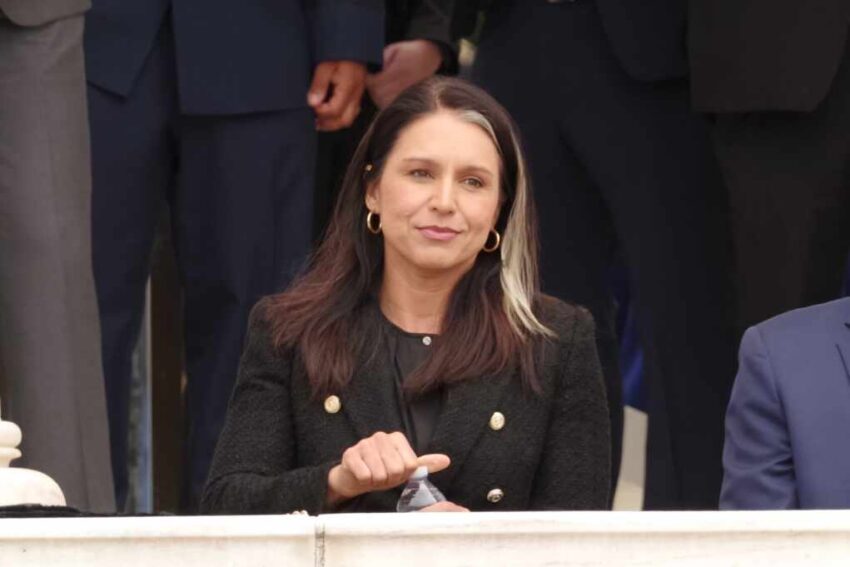With President Trump’s full backing, Tulsi Gabbard’s unprecedented ODNI overhaul is shaking up Washington, promising to cut bureaucracy but igniting fierce debate over the future of U.S. intelligence.
Story Snapshot
- Gabbard launches “ODNI 2.0,” cutting workforce by 40% and eliminating seven mission centers
- Reform directly fulfills Trump’s pledge to dismantle the “deep state” and depoliticize intelligence
- Projected $700 million in annual taxpayer savings; backlash from entrenched interests and political opponents
- Expert opinions split—supporters praise efficiency, critics warn of security and coordination risks
Gabbard’s ODNI Overhaul: Unprecedented Cuts and Conservative Mandate
Tulsi Gabbard, confirmed as Director of National Intelligence in February 2025, wasted no time launching the most dramatic reform in the agency’s history. Her plan, called “ODNI 2.0,” slashes the ODNI workforce by 40%, eliminates redundant mission centers, and returns the agency to its original core mission: intelligence integration. President Trump’s direct mandate signals a decisive push to rein in what many conservatives view as years of bureaucratic bloat and politicization, finally acting on promises to “drain the swamp” and restore constitutional limits to government overreach.
Tulsi Gabbard to downsize ODNI’s workforce by 40%, eliminate ‘politicized’ offices https://t.co/vPE1XLlDfR pic.twitter.com/FLRVGsOl33
— New York Post (@nypost) August 20, 2025
Implementation began just days after Gabbard’s August 20 announcement, with pink slips going out to over 700 ODNI employees. The payroll is shrinking from more than 2,000 to roughly 1,300, and entire mission centers—seen by critics as vehicles for political agendas—are being shuttered or consolidated. Annual savings are projected at $700 million, a figure touted by fiscal conservatives as long-overdue relief for taxpayers. The move also eliminates controversial DEI (Diversity, Equity, and Inclusion) initiatives, aligning with calls from Trump supporters to end “woke” programs that critics argue undermine merit and mission focus.
Context: ODNI Origins, Expansion, and Conservative Frustration
The Office of the Director of National Intelligence (ODNI) was created in 2004 to fix intelligence failures exposed after 9/11. While intended to coordinate the sprawling U.S. intelligence community, ODNI steadily grew into a massive bureaucracy. Over the past two decades, public trust in the intelligence community plummeted, with many Americans—especially conservatives—seeing the agency as politicized and hostile to constitutional values. Previous reform attempts failed amid resistance from entrenched interests and partisan gridlock, fueling frustration among those who saw ODNI as a symbol of unchecked “deep state” power.
Gabbard’s appointment, directly backed by President Trump and supported by Vice President JD Vance and Secretary of State Marco Rubio, was framed as a direct challenge to the status quo. Senator Tom Cotton, chair of the Senate Intelligence Committee, called for even deeper cuts, arguing that ODNI’s bureaucracy had become a liability to national security and government accountability. Congressional Republicans rallied behind the overhaul, while Democrats and some intelligence veterans raised alarms about potential gaps in coverage and loss of expertise.
Immediate Disruption and Long-Term Stakes for U.S. Intelligence
The short-term impact of ODNI 2.0 is undeniable: hundreds of jobs lost, disruption across the intelligence community, and uncertainty about how remaining personnel will adapt to new priorities. Critics warn that eliminating mission centers could create dangerous gaps in intelligence coverage and coordination, risking national security. Supporters counter that the reforms finally restore agency focus, reduce waste, and eliminate political activism masquerading as intelligence work. The transfer of the National Intelligence University to the National Defense University is seen as further streamlining, but also raises questions about future training and expertise.
Ultimately, the fate of ODNI 2.0 will shape not only the future of U.S. intelligence operations but also broader debates over government power, constitutional rights, and the ability of elected leaders to enact real change in Washington. For conservative Americans frustrated by years of government overreach, this overhaul represents a long-awaited victory. For critics, it is a risky gamble. The outcome will reverberate far beyond the intelligence community, testing whether deep, structural reform can succeed in a politically polarized nation.
Sources:
DNI Press Release: Tulsi Gabbard Sworn in as Director of National Intelligence
U.S. Senate: Tulsi Gabbard Confirmation Details
Chairman Smith Statement on Tulsi Gabbard’s Confirmation as Director of National Intelligence
Senator Warren Statement: Gabbard Confirmation Concerns
ODNI Press Release: Gabbard Announces ODNI Overhaul
Click this link for the original source of this article.
Author: Editor
This content is courtesy of, and owned and copyrighted by, https://conservativeamericatoday.com and its author. This content is made available by use of the public RSS feed offered by the host site and is used for educational purposes only. If you are the author or represent the host site and would like this content removed now and in the future, please contact USSANews.com using the email address in the Contact page found in the website menu.





